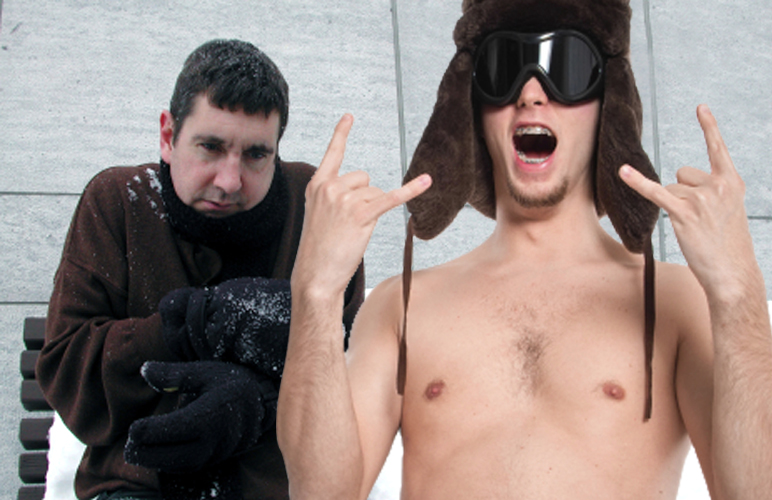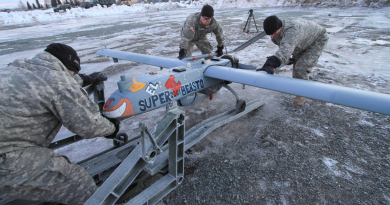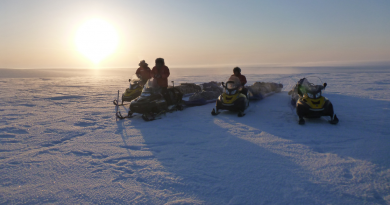El Nino: Should Alaskans expect a warm winter?
 Temperatures near the Earth’s equator at the Pacific are in a warming phase, a phenomenon known as El Niño that can influence weather patterns across the nation.
Temperatures near the Earth’s equator at the Pacific are in a warming phase, a phenomenon known as El Niño that can influence weather patterns across the nation.
It’s chilly counterpart, known as La Niña, results in a cool water injection into this influential mid-latitude thermostat.
Think of these two as the Heat Miser and Snow Miser, the famous claymation characters from the movie “The Year Without A Santa Claus,” who melted and froze things on a whim.
La Nina, or Cold Miser, was in control during the 2011-2012 winter that plunged much of Alaska into some of its coldest and snowiest months on record. In Anchorage, Alaska’s largest city, this extraordinary season blanketed streets with upwards of 11 feet of snow, a new record. Other parts of the state were iced up for weeks, visited by deep freezes well below zero.
The million-dollar question is whether El Niño, or Heat Miser, will deliver balmier days this winter in Alaska, with fewer loads to shovel?
Far north communities plunged into double-digit subzero temperatures for extended stretches last winter are keeping their fingers crossed. In January, Bettles averaged minus-35.6, McGrath minus-28.6, and Kotzebue minus-22.6.
Long-term predictions tough
Actually, El Niño could be welcome news for Alaskans statewide worried about meeting heating demands in a cold snap — and bad news for skiers and Bush residents looking to the freedom to travel winter trails by snowmachine. Maybe.
“I wouldn’t want to hazard to guess,” John Papineau, a forecaster with the National Weather Service in Anchorage, said Monday. “Who knows what it’s actually going to do.”
Weather forecasters caution that long-term climatic predictions — anything more than a few days, really — remain inherently unreliable. In other words, don’t bet the house on this being a warmer, wetter winter in Alaska.
One challenge is that while ocean temperatures are easy to measure, what effect they will have in Alaska’s atmosphere, is difficult to say. Weather patterns are dynamic systems, influenced by constantly changing conditions. And air temperatures are one thing. Precipitation is quite another. Will it be cold and dry? Cold and wet? Warm and dry? Warm and wet? Every year can bring a different outcome, even with the general trends one might anticipate from a La Nina or El Niño era.
Generally during an El Niño event, Anchorage might be warmer over the entire winter by 1.5 degrees. But Alaska weather is also influenced by the Aleutian Low, a low pressure system that generates storm systems from the Pacific near the Aleutian Islands and drives them into the Gulf of Alaska and the Bering Sea. Sometimes, though, during an El Niño year, the Aleutian Low can shift to the eastern part of the gulf, which, in turn, can draw colder air out of the arctic and pull it across much of the state. The outcome? Colder-than-usual weather during an era when ocean temperatures are warmer than usual.
Anchorage experienced this during the 2006-2007 and 1994-1995 winters. But in other El Niño years, 2004-2005, 2002-2003, and 1986-1987, temperatures in the city were warmer than average.
“It just depends on the combined storms (and) how they move over much of the winter,” Papineau said.
Swimming against the trend
In the El Niño year of 2007, for instance, Fairbanks was almost six degrees colder than normal. Most other locations around the state saw a similar chill, although Southwest Alaska was a tad warmer than normal.
Much the same happened in the El Niño winter of 1995. Anchorage, Fairbanks and most of the state went cold, but the Bethel area was a bit warmer. If one traces weather records all the way back to the 1960s, a year can even be found when Fairbanks was pushing 10 degrees colder than normal in what was supposed to be a warm winter.
But all of those cold El Niño winters are anomalies.
The norm for “the child” is a rise in temperature and additional moisture in Alaska. In what form the moisture falls along coastal Alaska is another big unknown. The Alaska coast is fickle. A temperature difference of just a few degrees is all that’s separates soggy from white.
“Keep in mind,” Papineau said in a 2009 interview, “that the enhanced precip during the winter does not necessarily translate into more snowfall as the frequency of warmer snowfall events is also increased. This is especially true along the Gulf of Alaska where temperatures are often near freezing.”
Translation:
If it warms up enough for Anchorage to go all Seattle-like, the skiing sucks.
That happened in the winter of 2002-03. Less than 40 inches of snow fell that winter, some two-thirds of the norm. People were hiking when they would normally have been skiing or snowmachining. When it did snow, it rained shortly thereafter to wash the snow away.
Gear up for anything
But it doesn’t always work out this way. The winter of 1994-95, another El Niño winter, brought more than 120 inches of snow to Alaska’s largest city. That’s 10 feet. People were sometimes so busy digging out they didn’t have time to ski or snowmachine.
So, winter-minded Alaskans looking for advice on gearing up for November and beyond should prepare for anything. If you live in Anchorage, invest in a good raincoat, a snowthrower or a snowplow for your truck — maybe all three. And then, too, you might want a good parka in case El Niño pitches another anomaly.
Because the truth is that all history does is enables weather forecasters to make a good guess at what is likelier to happen. They don’t really know. They can’t. The global climate is hugely variable and humans are a long, long way from figuring out exactly how it works. Here’s about all they really know for sure:
Anchorage winters have, for reasons not perfectly clear, been getting generally warmer since the early 1900s. There used to be 20 to 30 days each winter when the temperature went below minus-10 degrees. In the last couple decades, there have usually been only five to 10 days when that happened. So a mild winter in Anchorage this year would be largely in keeping with the new normal.
Elsewhere in Alaska, however, there’s not much sign of moderation. Barrow shows no trend toward milder winters. It has been oscillating between 45 and 90 days of temperatures at least minus-20 for almost 100 years. The same goes for Nome, which has been in the range of 60 to 90 days below zero since near the Gold Rush days.
Remember that El Niño winter of 2002-2003, when Anchorage temperatures for November to March averaged near 29 degrees (the norm is about 20)? Nome had about 60 days below zero, which is pretty much a normal winter there. If there is any such thing as normal in Alaska.
Contact Craig Medred at craig(at)alaskadispatch.com and Jill Burke at jill(at)alaskadispatch.com
For more stories from Alaska Dispatch, click here



